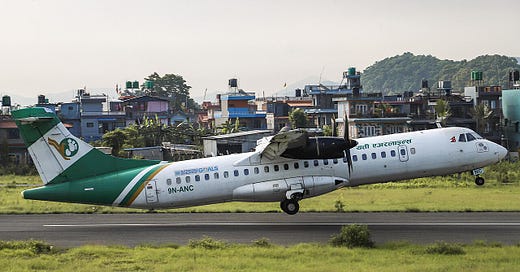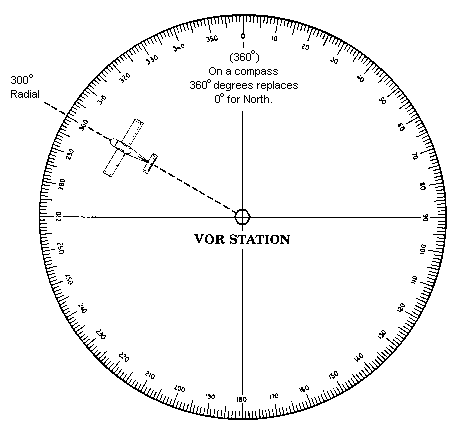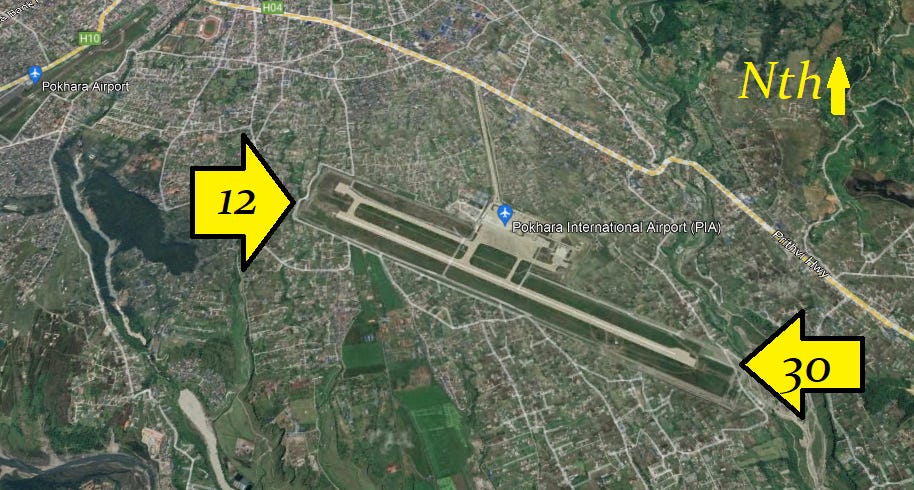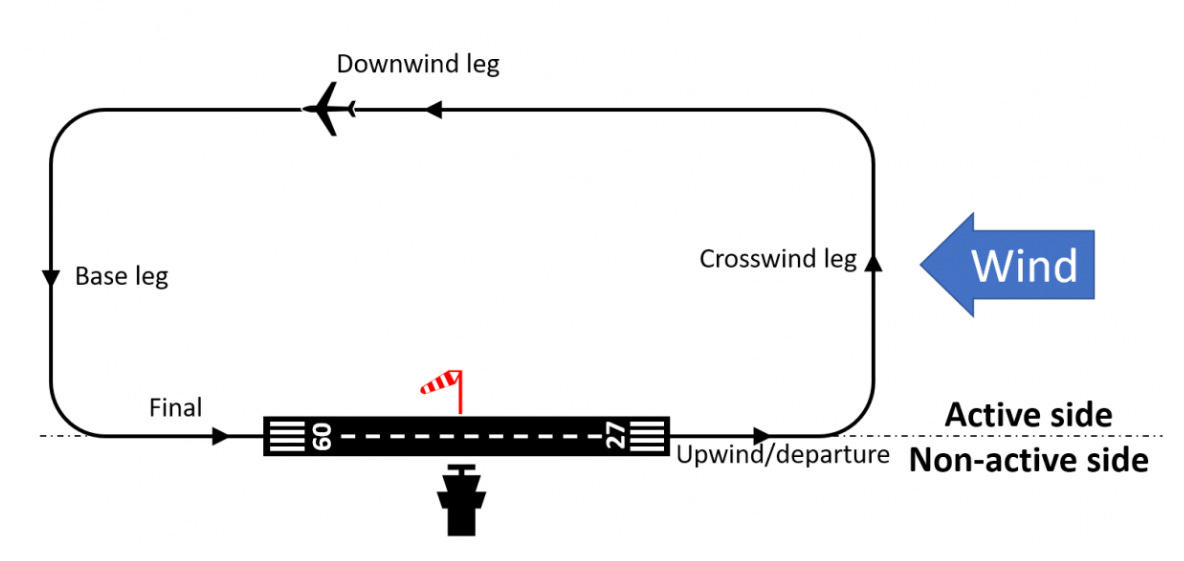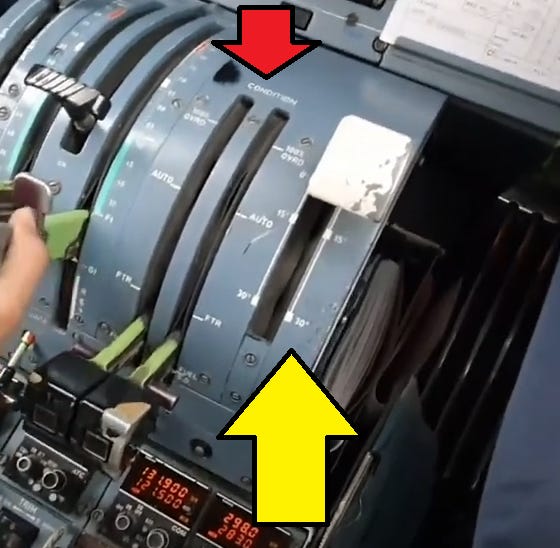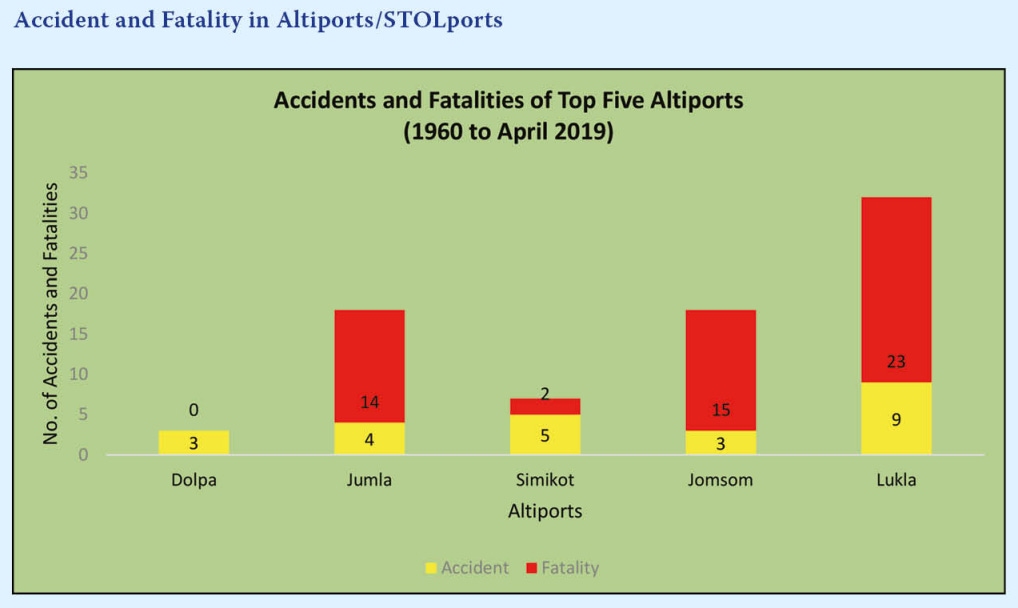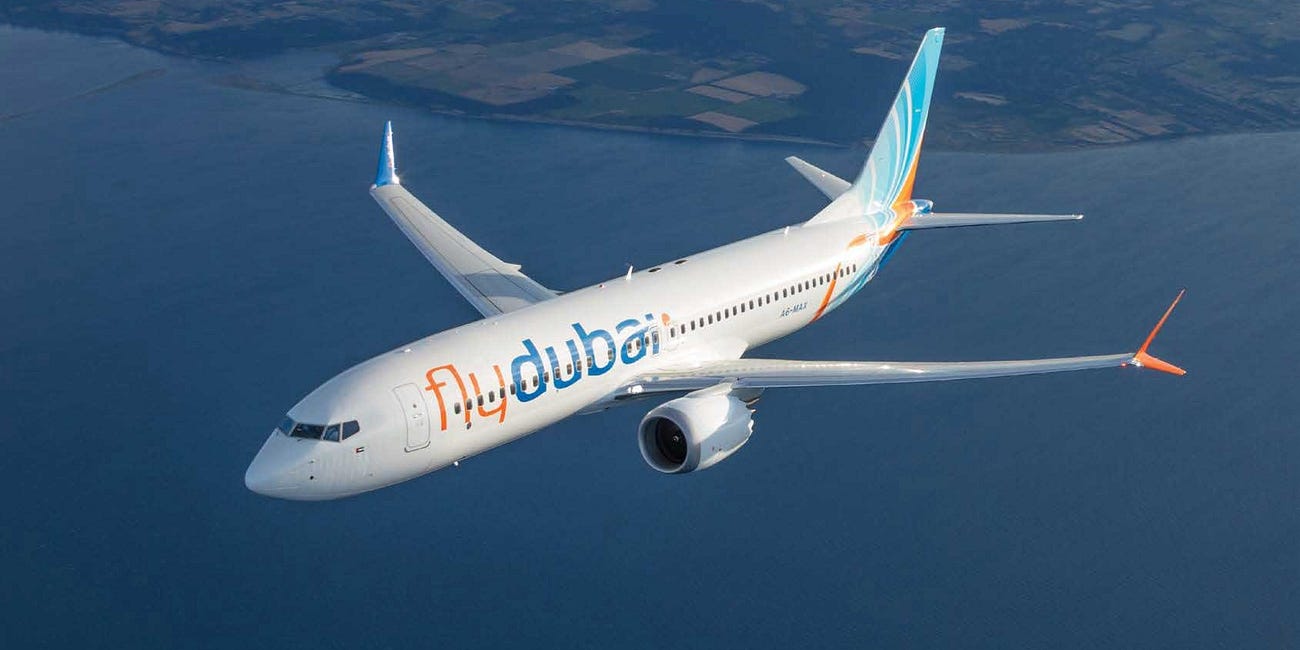Image of the accident plane taken well before its demise. Credit: TMLN1234, CC BY-SA 4.0
On 15 January 2023, Yeti Airlines Flight 691 crashed in Nepal. This article takes a deep look into the incident and into aviation in Nepal, generally.
Yeti Airlines Flight 691 incident
The preliminary report regarding Yeti Airlines Flight 691, which crashed in Pokhara, Nepal on January 15, 2023, has finally been released by the Aircraft Accident Investigation Commission of Nepal’s Ministry of Culture, Tourism and Civil Aviation. Occurring on a clear, sunny day, Flight 691 crashed just between the runway of the old regional airport and the threshold of runway 12 of Pokhara International Airport.
The international airport had opened just 14 days earlier, on January 1. Immediately following the accident, reports focused on the “challenging” nature of flying in Nepal, highlighting the “long history” of aircraft crashes in the country. I took a look at the report and discuss the implications of the main conclusions. Also, having climbed aboard hundreds of flights into, out of, and across Nepal, I provide a look at the history and current state of aviation there.
Yeti Air Flight 691 preliminary report
On January 15, 2023, Yeti Air Flight YT691 departed Tribhuvan International Airport (VNKT) in Kathmandu at 10:32 am (all times in NPT). Operating the flight was aircraft 9N-ANC, an ATR-72-212A/500. The ATR-72 is a twin-engine turboprop plane manufactured by Avions de Transport Régional (Italian: Aerei da Trasporto Regionale), a joint venture company of Airbus and Leonardo. A short hauler, the ATR-72 seats up to 72 people, has a range of about 852 miles (1,370km) and flies to a maximum height of 25,000 feet fully loaded. (Note, all altitudes will be given in feet, which is the standard in aviation globally, except for China, North Korea, and Russia up to 2017).
At about 91 miles (147km), the trip between VNKT and Pokhara (VNPR) had an estimated flight time of just 26 minutes. Because VNPR’s instrument landing system (ILS) was not yet operational, the flight was being conducted under visual flight rules (VFR). This means that pilots must be able to see to certain distances, including making visual contact with the runway, in order to safely operate and land the flight.
The accident aircraft was originally delivered in 2007 to Kingfisher Airlines. Once the second largest domestic carrier in India, Kingfisher Airlines eventually went bankrupt in 2016 after losing its airline license in 2012. Kingfisher sold the aircraft to Thailand’s Nok Air in 2013, who sold it to Yeti in 2019. So far, no maintenance records have been released on the aircraft since its acquisition by Yeti. After a review of prior air crashes in Nepal, it appears the January 2023 crash was the country’s first involving an ATR-72.
With 72 souls on board, 68 of them passengers, YT691 travelled the distance to Pokhara with no issues. Upon its approach to the airport, air traffic control (ATC) assigned the flight to runway 30. Airport runways are numbered by the cardinal direction they face. Thus, runway “30” indicates that the runway extends in an orientation of 300◦ on a radial compass. ATC typically selects the landing runway based on atmospheric conditions, or other factors, such as traffic.
Wind in Pokhara that day was minimal, 3 to 5 knots, and visibility was at about 3.7 miles (6km). Newly opened, the airport did not have any significant traffic around the time of the incident. Nonetheless, for reasons not yet clear, the aircraft crew requested to land on runway 12 (the opposite end) instead of 30. With less than a minute remaining before expecting to land on runway 12, YT691 suddenly veered into a sharp left bank from a low altitude. It struck the ground at 10:57 in a small chasm along the Seti-Gandaki River, killing everyone aboard.
Source: Google Maps
YT691 had two pilots on board, Anju Khatiwada and Kamal KC. The latter, an instructor pilot, was overseeing Captain Khatiwada who was “obtaining aerodrome familiarization” with the new airfield. Captain Khatiwada was the pilot flying from the left seat while Captain Kamal KC was the pilot monitoring from the right. Prior to the accident flight, the two captains had flown a roundtrip from VNKT to VNPR and back earlier the same day. Captain Khatiwada, 44, lost her husband to an air crash in 2006 on a Yeti Air Twin Otter flight. She joined Yeti Air in 2010 and became a full-time captain for the airline in 2019.
Captain Kamal KC was a trainer pilot who started at Nepal Airlines and moved to Yeti about fifteen years ago. He earned his pilot license in the United States. Both pilots appeared to have extensive experience, though their occupational records have not yet been released.
As mentioned, the accident flight left VNKT and traveled toward VNPR with no reported issues. Upon ATC’s permission to switch from runway 30 to 12, YT691 began its descent to join the downwind track for runway 12, north of the runway. A downwind track or leg is a common procedure flown under VFR conditions. Pilots fly parallel to the runway, in the opposite direction of landing, usually having established visual sight of the runway. ATC also confirmed visual identification of the aircraft.
At 10:56:12, the pilots extended the ATR’s flaps to 15◦ and released the landing gear. Typically, an ATR will be traveling around 160 knots with flaps deployed at this level. Flaps assist aircraft with maintaining lift while moving at lower speeds because they extend the wing surface and increase the allowable angle of attack. This means planes can fly with the nose tilted up somewhat, but must apply more power to maintain speed because the flaps add drag, which is exacerbated by extending the landing gear. According to the report, the power at this point was in the take-off setting—a high-power setting.
Five minutes after deploying the flaps to 15◦, Captain Khatiwada disengaged the autopilot and took manual control of the flight. At that time, the flight was 721 feet above the ground. She called for her co-pilot to extend the flaps to 30◦ and, as is proper, he called back the command and stated that they were descending. Notably, the flight data recorder (FDR) did not record an extension of the flaps from 15 to 30 at that time. Instead, the propeller rotation speed (Np) of both engines suddenly decreased to less than 25% while the torque plummeted toward 0%.
Turboprop planes like the ATR measure power in Horsepower (Hp). Horsepower essentially is the rotation speed of the propellers (Np) times the torque value. Thus, a reduction in both is a reduction in the overall power—and, therefore, thrust—the engines are producing. At a critical flight stage where the plane is low in altitude and speed, and high in drag (with flaps and landing gear deployed), a loss of power can be catastrophic. As power is lost, propellers on the ATR enter a feathering condition, which positions the leading edge parallel to the airflow to reduce drag. Normally, pilots initiate propeller feathering after losing an engine to reduce drag and therefore reduce the load on the remaining engine. This enables dual-engine planes to continue flight on only a single operating engine.
Screenshot from Fly with Magnar
It is currently not known why the engines suddenly lost power and torque. The picture above—which is not from the incident flight—is helpful to illustrate the relevant controls for flaps and power, which are positioned right next to each other. The yellow arrow points to the flaps controls. The upward position of the lever indicates that the flaps are not deployed. One step down extends them to 15◦ and another step down extends them to 30◦. The levers under the red arrow indicate the propeller condition. In the image, the condition levers are both in “fuel shut off” mode. The next step up is the “feather” position (FTR). During flight, the condition levers should be set to “auto,” the second-to-the-top position.
While it seems inconceivable that an experienced pilot could mistake the flaps lever with the condition levers—there are two condition levers, one for each engine—it remains curious that the shift downward from “auto” to “feather” is nearly parallel to the lever position for flaps 15 to 30.
It is also worth noting that when the propellers entered a feather condition on YT691, the cockpit voice recorder (CVR) picked up a single Master Caution chime. The report does not indicate the position of the condition levers at the time of the incident, but it does note that both engines were running in “flight idle.” This happens when the propellers are feathered to prevent over-torque. The engines were in flight idle despite the power lever angle ranging between 41 and 44%. [There is more on this issue in the update at the bottom of this article].
The report does not explain why the Master Caution alert sounded. It states simply, “a single Master Caution chime was recorded at 10:56:36. The flight crew then carried out the ‘Before Landing Checklist’ before starting the left turn onto the base leg.” Nothing in the report indicates whether the pilots reacted to the alert, or even noticed it. I am not familiar with the ATR’s specific mechanisms that trigger alerts in the cockpit, but TransAsia Flight 225’s accident report noted that when its engine 2 entered into a feathering condition, an aural alert sounded in the cockpit.
TransAsia Airways Flight 225 involved an ATR 72-600 that crashed in the Keelung River about 3 miles from takeoff in 2015. Investigators learned that the initial cause of that incident involved a “spurious autofeather,” essentially a malfunction in the automatic takeoff power control system (ATPCS). The pilots responded by erroneously killing power to their only remaining operative engine while at an altitude no higher than 1,630 feet.
In the case of YT691, it is possible the audible alert indicated that one engine had entered an autofeather state. If so, it is also possible that one of the pilots erroneously disengaged the remaining active engine, but so far, no evidence has been provided to reach any conclusion. In fact, the report’s description of the pilots’ activity following the Master Caution suggests this was not the case.
Moreover, after reviewing dozens of cases involving turboprop aircraft and consulting several aviation forums, I could find no claim of a simultaneous spurious autofeather incident in an ATR. Mechanically speaking, it is possible that a spurious autofeather in both engines could happen, especially if the aircraft had a bad maintenance record, but the odds remain extremely low. The maintenance records for YT691 have not yet been released.
Regardless, the flight crew proceeded in carrying out the “Before Landing Checklist” following the aural alert. At that point, the FDR data indicated that neither engine was producing any thrust. At the same time, the FDR did not register any engine anomaly. This suggests there was no detected mechanical failure of either engine, but neither was providing the necessary thrust to remain airborne for long.
Within 20 seconds of the Master Caution alert, Captain Kamal KC called for a little more power. Four seconds later, the CVR picked up a click which may indicate that the flaps lever was moved to 30◦ and the flaps did extend then (on many planes, the flaps lever makes a noticeable sound when moved). Over the next 11 seconds, the pilots became increasingly aware that the aircraft lacked power. Captain Khatiwada stated this twice. Someone then shifted the power levers to 62 degrees, followed by a push to full power. After the move to full power, a “click” of unknown origin sounded. The aircraft flew at 368 feet above ground at this point.
Just two seconds later, Captain Khatiwada handed the controls to Captain Kamal KC. The transfer of flight controls, particularly from a junior to senior officer or from a less experienced to more experienced pilot, usually happens when the flight is in trouble. Immediately following the handoff of controls, Captain Khatiwada repeated that the engines were producing no power.
Six seconds after Captain Kamal KC took control, the stick shaker activated. Stick shakers are a decades-old mechanical feature of most commercial aircraft that create a noisy vibration of the control yoke warning the flight crew of an imminent aerodynamic stall. (Note that an aerodynamic stall means a loss of lift that keeps an aircraft airborne; it does not refer to the state of the engines). Stick shakers warn the pilot of an impending stall, so there are at least a few seconds to attempt to recover the aircraft once initiated. Because the parameters for activation of the stick shaker involve the angle of attack and the speed of the aircraft, the usually proper response is for pilots to immediately implement a nose-down, power-up attitude.
YT691 was flying at just 311 feet upon the first stick shaker activation. The report does not indicate how Captain Kamal KC responded to the warning, but video of the aircraft just seconds preceding the crash show it in a slightly nose-up attitude. Only two seconds after its first warning, the stick shaker alerted again followed immediately by (an automated) radio call of 200 feet while the aircraft instituted a sharp leftward bank. If these altitude numbers are accurate, the flight at that point was descending at a rate of 6,000 feet per minute, roughly 8x faster than a stabilized descent rate. The aircraft impacted the ground at 10:57:32.
Based on the report, video of the incident and the local weather conditions, it appears that YT691 crashed primarily from an aerodynamic stall resulting from a lack of thrust in both engines. Investigators must uncover the reason for the feathering condition of both engines. The pilots seemed surprised and/or confused by the lack of power, suggesting that neither of them purposely instigated the propeller feathering.
A mechanical causation thus cannot be ruled out, especially in light of at least one unexplained Master Caution alert. As both pilots were experienced, it seems unlikely—albeit possible—that the incident began with an unforced error, but it cannot yet be ruled out that one or both pilots responded to some problem in an ultimately tragic and mistaken way. It also remains possible that a mechanical failure occurred at a critical moment of the flight from which recovery was impossible no matter how the pilots responded. Hopefully, further investigation will lead to conclusive findings. Since their introduction in 1989, ATR-72s have been involved in just 66 accident events globally, with only 12 of those involving fatalities. YT691 has the unfortunate distinction of being the first ATR-fatality incident in Nepal.
Aviation Safety in Nepal
As often happens after an air crash, questions arise about the safety of air travel on a specific airline or in a particular location. Regrettably, Nepal has long held the perception of an inherently dangerous place to fly. In 2013, the European Union imposed a blanket ban on Nepali airlines flying into or over it. The ban was based on deficiencies found during inspections of airliners while at European airports as well as issues with Nepali regulators.
Even before that, the Himalayan Times reported on the safety issues in Nepal’s aviation sector, as far back as 2005. More recently, questions arose in March of 2018 when 51 people were killed when US-Bangla Airlines flight BS211 crashed at Tribhuvan Airport in Kathmandu. And again in May of 2022 when a Tara Air DHC-6-300 crashed enroute to Jomsom, killing 19. So, just how dangerous is it to fly in Nepal?
In 2018, the global fatal accident rate in aviation was about 1 per every 4.2 million flights. That same year, 267,502 domestic flights led to one fatal crash in Nepal. That accident involved a Cessna Grand Caravan carrying 2 people. The other fatal flight in Nepal that year involved a Bangladeshi Dash-8 (similar in build to an ATR-72), killing 51 people. Domestic carriers in Nepal carried a record 3.54 million passengers in 2021.
Since 2000, approximately 300 to 357 people (sources vary on this figure) have died in air crashes in Nepal, across a total of 21 accidents. ICAO (the International Civil Aviation Organization) gave Nepal a score of 70.1% in its 2022 international safety audit, ranking Nepal 3% higher than the global average, though well below many countries, such as Germany, which received 94.5%. However, when put in the perspective of overall numbers, flying in Nepal is vastly safer than driving. The Nepali Times reported that from 2014 to 2019, nearly 12,000 people died in traffic accidents in Nepal. Still, the number of aviation accidents in the relatively small country seems high at first glance.
Most of Nepal’s aviation crashes involve small fixed-wing aircraft and helicopters. The Flight Safety Foundation lists 68 aviation accident occurrences in Nepal since 1946, though this number reflects only fixed-wing aircraft able to carry 12 or more passengers (helicopter numbers are much harder to determine). About half of those events included fatalities.
By comparison, the state of Alaska in the United States had 10 fatal accidents in 2019 alone, and 50 fatal accidents between 2015 and 2019. Alaska’s population in 2020 was 733,391 compared to around 29 million in Nepal. Both Nepal and Alaska share some pretty rough terrain and weather for flying. Accident causation in Nepal directly correlates with these issues.
The 2019 Aviation Safety Report produced by Nepal’s Civil Aviation Authority (CAAN), noted that 74% of fatal flights resulted from Controlled Flight Into Terrain (CFIT). A CFIT accident occurs when there is nothing mechanically wrong with the aircraft, it is under pilot control, yet it unintentionally collides with the ground, water, mountain or other obstacle. CFIT accidents frequently happen when pilots lose situational awareness, especially the geographic position of the aircraft. Sudden changes in weather often lead to CFIT incidents, especially under VFR conditions.
Another problem particular to Nepal is the hazardous nature of Short Takeoff and Landing (STOL) airports, which comprise a large portion of Nepali airports. Navigating these types of airfields have resulted in 49% of the fatalities between 2009 and 2018. The most infamous of these, Lukla, accounts for more fatalities than any other, with Jomsom and Jumla ranking near each other in second and third place.
Lukla sits at the top of the list due to a number of factors: its high elevation (9,337 feet), its very short, upward gradient runway, and its lack of a go-around procedure. In addition, none of Nepal’s STOL airports have a working ILS, which means pilots must conduct operations visually—a daunting task in the weather of the Himalayas. It is common across the world for STOL airports to lack ILS. The result, though, is that STOL airports often leave little room for error; sudden windshear or overspeed landings have a higher likelihood of negative outcomes on these types of airfields.
Mile-per-mile, Nepal’s skies are far safer than its roads and are comparably better than many other places in the world one can fly. Nonetheless, dependent as it is on tourism—of which aviation is a significant part—Nepal must work on the public perception of its flight industry. Despite the two high profile events in May 2022 and January 2023, Nepal has pursued many improvements. As a result, it has shown a continuous drop in fatalities between 2009 and 2019.
One measure CAAN has adopted toward implementing higher safety standards is its hazard reporting system. This allows pilots to report specific dangers that can then be forwarded to other flights or to regulators. In 2021, CAAN received 986 reports identifying potential hazards in organizations (43%), with technical issues (20%), environmental (18%) and others. This voluntary reporting system is an excellent measure to address potential problems and is used in other major markets, including the USA and Europe.
Another program, the Safety Management System (SMS), is also in place, although its effectiveness and compliance numbers leave a lot of room for improvement, according to CAAN reports. Nepal’s responsiveness to recommendations based on accident investigation has also shown improvement. For example, recommendations made to CAAN have been complied with or partially complied with 86% of the time (6% comprises “not-complied” and 6% comprises “not-applicable”). Carriers have complied in similar numbers (86% complied/partially-complied), with 13% non-compliance and the rest not-applicable.
CAAN’s forward-looking plans also have significant positive potential. It has instituted the National Aviation Safety Plan for 2023 to 2025. This plan addresses areas such as CFIT mitigation, Loss of Control in Flight (LOC-I) mitigation, reduced Runway Incursions (RI) and other areas acutely problematic in Nepal. Among the proposals are to require Terrain Awareness and Warning Systems (TAWS) in more aircraft, enhance regulation of the use of Ground Proximity Warning Systems (GPWS), ensure timely updates of Electronic Terrain and Obstacle Data (eTOD), and to increase training requirements in many critical areas, among many other items. Its full report is worth a read, here.
Another proposed reform, specifically requested by ICAO, is to split CAAN into two entities—a service provider and regulator. Serving as the national regulator for aviation safety, CAAN also runs Tribhuvan International Airport in Kathmandu and Gautam Buddha International Airport in Bhairahawa. Legislation required to allow the split seems to have stalled, with some believing that the split is altogether unnecessary. CAAN’s Director-General Pradip Adhikari stated in May of 2022 that the EU Commission has not demanded the split and that it hasn’t questioned similar arrangements in Bangladesh or Singapore.
The EU Commission hinted otherwise in its report on November 23, 2022. It highlighted the Nepal government’s “revised considerations about the functional separation of the regulatory and services provider roles of CAAN, which is a longstanding issue.” It then stated that the adoption of a new regulation that will “ensure CAAN’s functional division” [my emphasis added] of regulatory and provider roles may lead the Commission to reassess the ban on Nepal flights into the EU, presumably if it is satisfied with the mechanics of CAAN’s division. ICAO’s 2022 safety audit underscored deficiencies in Nepal’s national organization of regulation and accident investigations, both functions of CAAN. The perceived issue is that CAAN’s dual role as regulator and service provider creates conflicts of interest that hamper safety enforcement. How CAAN and the Nepal government proceed here will play a critical role in the future of Nepal-based airlines’ international aspirations.
Hemant Arjyal, an aviation analyst, told the Kathmandu Post that “The reluctance to listen to the aviation watchdogs will cost Nepal in the long run. Although Nepali airlines don’t fly directly to the EU, tourists, particularly in the high-end segment, are reluctant to travel to countries that have been flagged by the aviation watchdog.” As of this writing, it appears unlikely a legislated split of CAAN will occur, so hopefully the “revised” method of division will prove to be sufficient.
To sum up, flying in Nepal certainly carries some risks. The portrayal of those risks, in my opinion, are somewhat misleading. Nearly everywhere, flying in small-capacity aircraft is far riskier than flying aboard highly sophisticated airliners. Nepal’s unique topography vastly complicates piloting small, less sophisticated aircraft. After all, a single flight in Nepal can traverse land elevations as low as 60m above sea-level and as high as any of these aircraft can actually fly. Most airports lack ILS equipment and smaller planes lack enhanced instrument systems, making pilots highly vulnerable to prevailing weather conditions, which are subject to swift changes in the Himalayan region. The result has been that the large majority of aviation fatalities in Nepal have occurred in these smaller aircraft.
Nonetheless, much can be done to improve the safety record. The easier solutions seem to be enforcing pilot credentials and regular training regimens, establishing rigid mandatory maintenance schedules, and enforcing VFR flight rules. Perhaps more complicated would be installing precision landing systems in more airports and promoting the use of more advanced navigational tools in domestic carrier aircraft, even smaller ones.
CAAN is under increasing pressure to implement these policies, and indeed has articulated its goals in considerable detail. All of Nepal will benefit from an improved perception of safety in its aviation industry. Moreover, this will inject much needed energy into the tourism sector, which is dearly needed following the COVID pandemic years.
update Feb 27: Magnar Nordal, whose LinkedIn states he is a pilot with the Maldivian Island Aviation Services company, and has a 30k+ subscriber YouTube channel all about piloting the ATR, discussed the Yeti Flight at length here. I saw this only today; however, he makes several points that comport with my analysis above.
For instance, he notes that a major absence in the report is that we don’t know what the pilots actually did in response to their realization that they did not have thrust power. We do know that the power lever was moved to a higher power position, but that’s all. Did they scan their instruments, check flight levers, etc.?
I also noted the proximity of the flaps lever and propeller condition levers. Pilot Nordal explains in detail how it is “unbelievable” that either pilot could mistakenly pull the condition levers instead of the flaps lever (which would trigger a feathering condition). For one reason, there are two condition levers and just one flaps lever, as I noted above. But also, the condition levers have an additional tab on the lever that the pilot must pull as he/she moves them. The flaps lever only requires pulling it up slightly to move it (see video at around 13:00). Pilot Nordal shows this in the video, and I am inclined to agree that making such a mistake seems extremely improbable (though, obviously, not impossible).
Moreover, Pilot Nordal notes that investigators must conduct a deeper analysis of the “human factor” in this incident. In my article on Tara Air Flight 197, I discuss at some length the issue of Cockpit Resource Management (“CRM”).
The Tara Air Flight 197 Final Report
I previously wrote on this incident based on the release of the preliminary report. Nepal’s Civil Aviation Authority (CAAN) has now released its final report on the incident. This article will reference my previous, but with new detail and recommendations based on the latest findings.
CRM means utilizing all of the available tools at a flight crew’s disposal to effectively and safely operate a flight. This includes instruments, but also means sharing tasks, information and observations between the operators. The report does not provide a lot of information on this, but it seems that the flight crew did not readily communicate with each other as the issues grew more complex.
For instance, the report describes what happened in some detail after the crew completed the “Before Landing Checklist.” Here, while Captain Khatiwada repeatedly observed that they lacked power, nothing in the report indicates whether Captain Kamal KC verbally responded. Likewise, little is said about what the pilots may have said during the transfer of flight controls from Khatiwada to Kamal KC.
The point of this latter observation, and the goal of all aircraft crash investigations generally, is not to impugn the pilots. Rather, it is to find the deficiencies that led to the outcome, whether human factor, maintenance, airline or regulatory policy, or otherwise. The key to improving safety in Nepal—and anywhere else—is to learn from mistakes and to implement changes (new company policies, regulatory policies, enhanced training, and so on) to address these deficiencies in such a way as to make a repeat of the incident all but impossible. Petter Hörnfeldt, a 737 pilot and widely known as Mentour Pilot, does an exceptional job of explaining how this has been done in the aviation industry.
If you enjoyed this article, consider giving it a like. It helps placate the all-controlling algorithm, or Buy me A Coffee if you wish to support my work.
* Articles post on Wednesdays and Saturdays *
For more aviation stories, see below.
A Legendary Performance
Except as noted, all information in this article comes from the Final Report of the Board of Inquiry, of October 12, 1983. Air Canada Boeing 767-200 On July 23, 1983, one of the most remarkable events in the history of aviation occurred involving Air Canada Flight 143. Flying a
Aviation Incident over Kathmandu
On April 24, 2023, some residents of Kathmandu were met by a spectacle in the sky—a Boeing 737-800 apparently on fire. Scheduled as a direct flight from Kathmandu to Dubai, Fly Dubai flight FZ576 experienced an engine problem upon takeoff from Tribhuvan International Airport (TIA). It eventually landed safely in Dubai at

